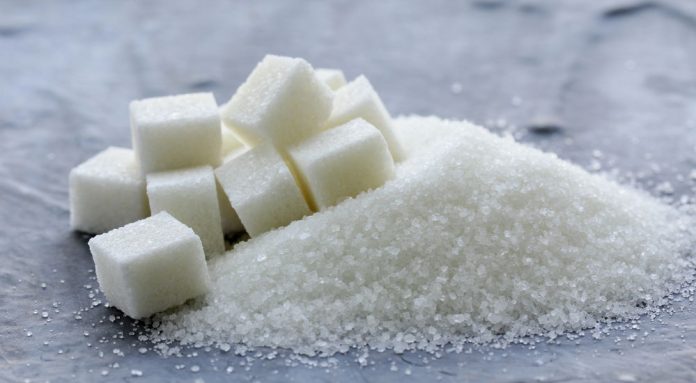The deadening effect of dumped sugar imports on the industry are illustrated in the year-end results released in May by Tongaat Hulett, one of SA’s major sugar producers. Despite a recovery in production after years of drought, revenues and profits were down because of high volumes of imported sugar.
The sugar industry has huge growth potential through expansion in local and regional markets as well as diversification into new areas. It is instead being hobbled by imports of subsidised sugar and inefficient, slow regulatory support.
The dumping, mainly from Brazil, raised sugar imports in 2017 to more than 500,000 tonnes. This is a result of a failure of tariff responsiveness to protect the industry, and an inadequate policy framework to deal with it.
It has created an immediate crisis, as the Tongaat Hulett results illustrate.
Longer term, the industry’s survival depends on diversification into new industries. Here again there are policy failures, including the lack of a mandatory fuel ethanol blend or investment incentives for innovations such as bioplastics and cane-based packaging, which are becoming popular worldwide.
SA produces 2-million tonnes of sugar annually, and industry estimates put the potential at 3-million tonnes. This would be a substantial boost for national and regional economies; direct and indirect job creation, particularly in poor rural areas; and attracting foreign investment.
First-quarter shock may ignite new ideas
The boost engendered by SA’s change in political leadership will have to start translating fast into higher rates of investment
BDliveSA / Hilary Joffe
Sugar is a major strategic industry. It generates R14bn in revenues, employs 79,000 people and provides indirect employment to a further 350,000 in other industries. Yet it has been in decline for years, shedding thousands of jobs as growers go out of business, mainly due to the increasing impact of questionable sugar imports.
This can be reversed. Sugar’s growth potential should be a focus of government efforts to stimulate the economy, generate taxes and create jobs in a country with one of the highest unemployment rates in the world.
In theory, the industry is protected by a dollar-based reference price: when world prices drop below a trigger price based on the local cost of production, tariff protection kicks in. In practice, as a Tongaat Hulett presentation shows, the reference price is not responsive enough to protect the local industry.
For months in 2017, tariff triggers were not implemented despite appeals from the industry. Then a zero tariff was erroneously implemented for seven weeks when it should have been R1,800 per tonne. Importers took advantage, bringing in sugar for sale and stockpiling for future months. The result was that sugar imports more than quadrupled from 114,000 tonnes in 2016 to 520,000 tonnes in 2017. The local industry’s share of the market dropped by 420,000 tonnes to just 1.18-million tonnes.
Reference price
The industry has applied for an increased reference price used in the calculation of duties, but the process is torturously slow. The application was submitted to the government in February. It has the support of the Department of Economic Development, and the industry hopes it will be implemented in 2018.
A government that changes the petrol price monthly — based on world oil prices — should be more agile and efficient in protecting the sugar industry. The lack of responsiveness to changes in the world sugar price is harming the industry and the country, and costing jobs.
The industry is working hard to develop local markets and to expand into neighbouring states. Tongaat Hulett is optimistic, anticipating further increases in production over the next few years.
However, overhanging all the industry’s efforts are a world sugar glut, further depressing prices, and the prospect that it will get worse. Brazil and other countries are exporting huge quantities of subsidised sugar at artificially low prices. African countries, which used to enjoy premium prices in the EU, are scurrying to find other markets for their surplus now that the EU price regime has changed. Sugar taxes in SA and elsewhere will further constrain consumption.
If SA’s sugar industry is to survive, it must diversify rapidly into areas other than sugar, as a food and sweeteners.
The big opportunity is fuel ethanol, which is a rapidly expanding business worldwide. Sugar is powering cars around the world as countries blend fuel ethanol with petrol. Brazil has become the world leader, followed by the US. Angola and Zimbabwe are doing the same, and Southern African Development Community ethanol opportunities are being explored.
So far in SA this opportunity has gone to waste. While Zimbabwe has a mandated 15% ethanol blend in its fuel and plans to increase this to 25%, SA has a legislated but unused provision for a 2% to 10% blend. Even a low blend would help stabilise the industry, while higher blend rates would further stimulate investment and jobs in a new ethanol industry. The possibilities are being examined by an industry task team set up to sustain the industry after the blow from the sugar tax imposed in 2018.
Some years ago the government estimated that an ethanol industry could create up to 125,000 jobs. A more recent industry estimate puts the number at 21,000 new jobs — a huge boost to poverty-stricken rural economies.
Electricity generation and bioplastics are other low-hanging fruits. South African sugar mills already generate their own power from cane. They have the capacity to increase this and feed up to 700MW of electricity into the national grid, creating about 26,000 jobs and contributing to rural development.
New technologies are resulting in innovative and often surprising uses for sugar. Sugar is increasingly being used for the production of bioplastics to make packaging and plastic bags. Major retailers and food and soft drink manufacturers are promoting the shift to “green” bioplastic bottles.
Bioplastics, some of them biodegradable, can also be used to make a variety of goods from vehicle and agricultural parts to toys, credit cards and cutlery.
Sugar-cane polyethylene can replace 30% or more of the petroleum that would otherwise be used to manufacture the plastic. Bioplastics can be made from sugar ethanol and from sugar cane, which make it both biodegradable and compostable. Sugar-based packaging is being used by South African retailers but it is imported from Brazil.
Let us hope that discussions between the government and the sugar industry result in programmes to incentivise biofuels, bioplastics and the co-generation of electricity. The potential is regional as well as national. Sugar is produced throughout Southern Africa, with SA and Swaziland the major producers. Some countries are already producing biofuels, while others are investigating or planning fuel ethanol production.
A regional sugar-cane ethanol framework would help to co-ordinate plans and share the benefits across Southern Africa. The region needs its own bioplastics and fuel ethanol industries to create jobs and enable local sugar industries to develop to their full potential, to the benefit of all.










